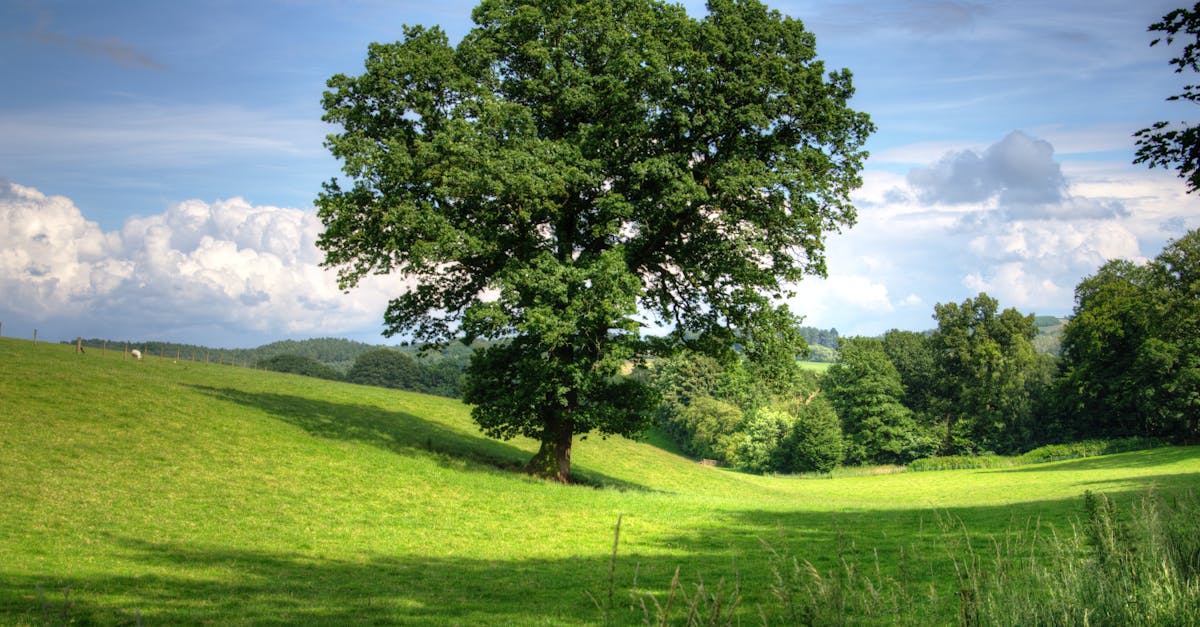
DIY vs. Professional Stump Grinding Depths
Stump grinding is a crucial step in removing a tree stump from your property, and deciding between DIY or professional services can be a daunting task. When evaluating the depth required for stump grinding, several factors must be considered. DIY stump grinding can be a cost-effective option for those with experience and the right equipment. However, when stump grinding near me, it's important to note that professional services often offer deeper and more thorough grinding, ensuring complete removal of the stump.
A key advantage of professional stump grinding is the consistency and depth of the grind that can be achieved. Professionals have the expertise and tools necessary to grind stumps to a level that minimizes the potential for regrowth and eliminates the risk of tripping hazards. While DIY options may seem appealing, they often lack the precision and depth required for long-term success. By opting for professional stump grinding near me, you can ensure a comprehensive removal process that effectively addresses the root system, reducing the chances of future issues.
Pros and Cons of Different Approaches
When deciding between DIY stump grinding and hiring professional services, each approach comes with its own set of pros and cons. Undertaking the task yourself may save money initially but can be physically demanding and time-consuming. Moreover, the equipment required for the job can be costly to rent or purchase. On the other hand, hiring professionals ensures a quicker and more efficient process, reducing potential risks and ensuring a thorough stump removal.
Another factor to consider when choosing between DIY and professional services is the depth of the stump grinding. A superficial grind may suffice for aesthetic purposes, but deep grinding ensures complete removal of the stump, reducing the likelihood of regrowth. Additionally, the use of chemicals in conjunction with grinding can further prevent regrowth, but this approach may pose environmental concerns and require careful handling. Ultimately, weighing the pros and cons of each approach can help in making an informed decision tailored to your needs and budget. Stump Grinding near me.
Stump Regrowth Prevention Methods
Stump regrowth can be a persistent issue post-stump grinding, prompting the need for preventative measures. One commonly employed method is the deep grinding of the stump, ensuring that a significant portion of the root system is removed. If opting for a professional stump grinding service, be sure to inquire about their techniques and equipment to ensure the stump is adequately ground. In situations where a DIY approach is preferred, make sure to assess the depth required for effective results by researching guidelines or consulting with experts in Stump Grinding near me.
Another approach to stump regrowth prevention involves the use of chemical treatments. While chemical applications can be effective in inhibiting regrowth, they may require multiple applications over an extended period for optimal results. Comparatively, deep grinding offers a more immediate solution by physically removing the stump and root system entirely. When considering the most suitable method for preventing stump regrowth, weighing the advantages and disadvantages of deep grinding versus chemical treatments is essential for long-lasting outcomes.
Deep Grinding vs. Chemical Treatments
Determining the most effective approach between deep stump grinding and chemical treatments ultimately depends on various factors. Stump grinding near me is a common search, indicating the desire for a practical solution. Deep grinding involves physically removing the stump below the ground level, ensuring that no visible remnants are left behind. This method not only eliminates the eyesore but also prevents any potential tripping hazards. On the other hand, chemical treatments involve applying substances to aid in the decomposition of the stump over time. While this method may seem less invasive, it can be a slower process and may require additional applications to fully break down the stump.
When comparing deep grinding to chemical treatments, it's crucial to consider the urgency of stump removal and the overall desired timeline. Stump grinding near me may be preferred for immediate results and a quicker resolution to the issue at hand. Deep grinding effectively eradicates the stump, providing a clean slate for landscaping or construction projects. Conversely, chemical treatments offer a more gradual approach, suitable for individuals who are not in a rush and are willing to wait for natural degradation to occur. Understanding the unique characteristics of both methods can help in making an informed decision based on specific needs and preferences.
LongTerm Effects of Shallow Stump Grinding
Shallow stump grinding, although a quicker and more cost-effective solution in the short term, can lead to some significant long-term consequences. When stumps are not ground deep enough, there is a heightened risk of regrowth. Tree roots may continue to sprout new shoots, causing persistent issues with vegetation management on your property. This regrowth can also compromise the integrity of nearby landscaping, structures, or utility lines. Potential underground hazards and ongoing maintenance concerns may prompt you to search for "Stump Grinding near me" to address these extended repercussions of inadequate stump removal.
In addition to regrowth concerns, shallow stump grinding may result in uneven ground settling over time. The remaining stump and its roots can decay slowly, potentially causing sinkholes or depressions in the surrounding area. This uneven subsidence not only poses safety risks but also negatively impacts the visual aesthetics and functionality of your outdoor space. To proactively tackle these long-term effects and ensure a smooth, hazard-free terrain, thorough stump grinding procedures are essential.
Assessing Risk Factors and Future Growth
When considering the long-term implications of stump grinding, it is crucial to assess the risk factors that may influence future growth. Factors such as soil conditions, climate, and the presence of any remaining roots can impact the potential regrowth of a stump. Consulting with a professional stump grinding service can provide valuable insights into the specific risk factors relevant to your location and help determine the most effective approach to prevent future regrowth. Additionally, utilizing online resources and searching for "Stump Grinding near me" can help locate local experts who can offer customized solutions based on the risk factors present in your area.
Understanding the risk factors associated with stump regrowth is essential for making informed decisions regarding the depth of grinding required. By conducting a thorough assessment of the surrounding environment and potential growth factors, property owners can better prepare for the future and minimize the chances of unwanted regrowth. Investing in professional stump grinding services or exploring other preventative measures, such as chemical treatments or deep grinding, can help mitigate the risks and ensure that the stump removal process is effective in the long term. For personalized recommendations tailored to your specific location, it is advisable to seek guidance from professionals familiar with the unique challenges of "Stump Grinding near me."
FAQS
How deep should you grind a stump?
The depth to which you should grind a stump depends on the size and type of tree. In general, it is recommended to grind the stump at least 6-8 inches below the ground level to ensure complete removal.
What is the difference between DIY and professional stump grinding depths?
DIY stump grinding may not always reach the recommended depth due to limited equipment and experience. Professionals have the tools and expertise to grind stumps to the necessary depth for effective removal.
What are the pros and cons of deep stump grinding?
Deep stump grinding ensures complete removal of the stump, preventing regrowth and potential hazards. However, it may require professional assistance and incur higher costs compared to shallow grinding.
How can I prevent stump regrowth after grinding?
To prevent stump regrowth, you can opt for deep grinding to remove the roots entirely or use chemical treatments to inhibit regrowth. Regular monitoring and maintenance can also help prevent new growth.
What are the long-term effects of shallow stump grinding?
Shallow stump grinding may lead to regrowth of the tree, as some roots may remain intact underground. This can result in future maintenance issues and potential hazards.
How can I assess risk factors and future growth when deciding on stump grinding depth?
Factors such as tree species, soil conditions, and proximity to structures should be considered when determining the appropriate stump grinding depth. Consulting with a professional arborist can help assess risk factors and anticipate future growth patterns.


